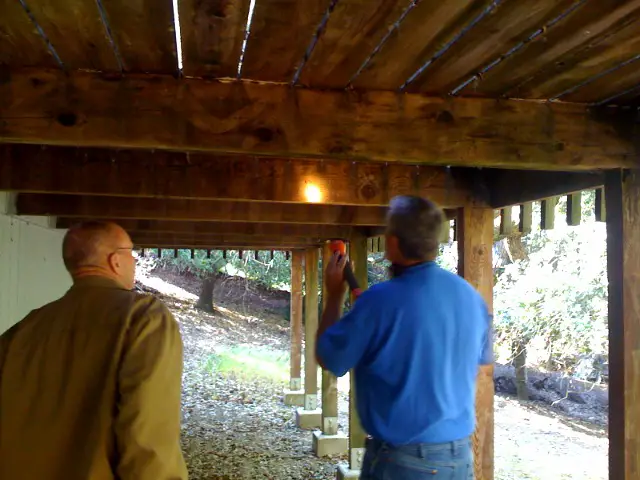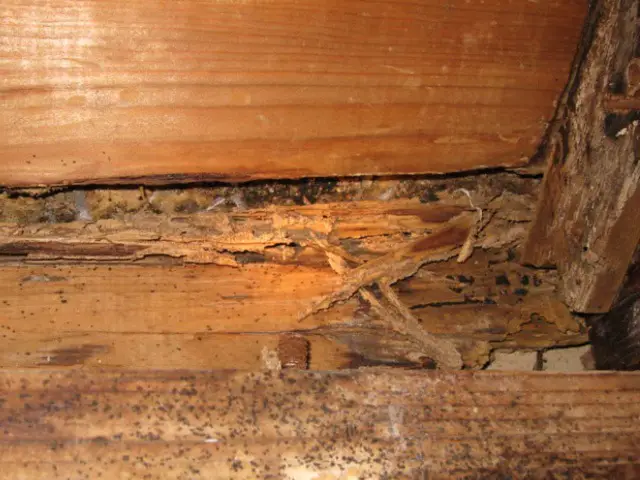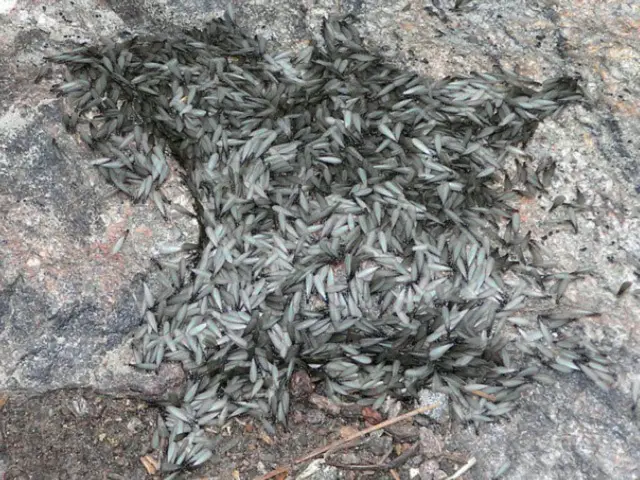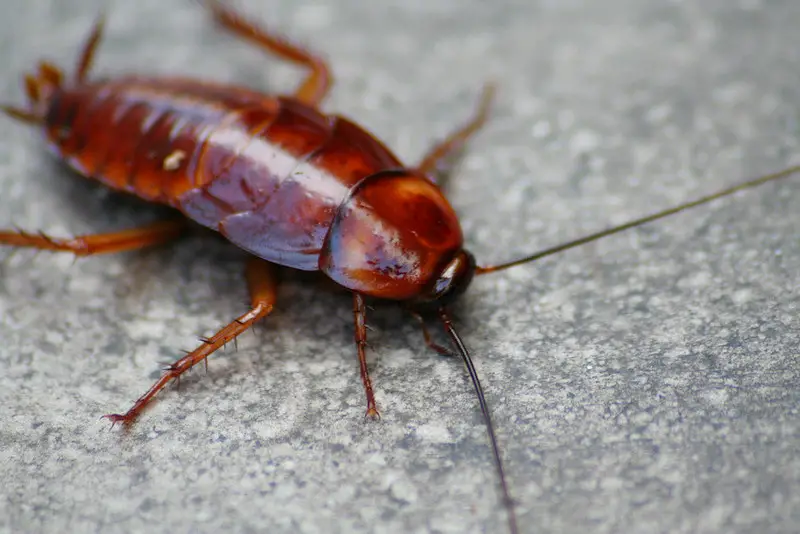How to get rid of ants in the kitchen?
Let’s face it if you want to get rid of ants in the yard or in your kitchen, it going to take some work. Worker ants from outside or inside nests may forage for food and water inside a kitchen. Foraging workers of some species secrete a chemical called pheromone. The chemical creates a trail to lead other ants right to your kitchen. The ants take food from your kitchen all that way back to the colony and share it with the other ants.
How to keep ants out of the kitchen?
Ants enter your kitchen in search of food, water or a good nesting site. Fortunately, there are ways to keep ants out of the kitchen.
The best way to get rid of ants is to remove food sources:
- Keep your kitchen clean and tidy. For example, clean the countertop of beverages and food. Only store food items in tightly sealed, ant-proof containers.
- Because ants are attracted to honeydew, make sure your control them.
- Repair all water leaks and dripping faucets to remove water sources.
- Replace rotten or wet wood.
- Move landscape rocks and mulch away from your home’s foundation. When you move mulch away from your home you also move the moisture that attracts ants to your kitchen.
- To keep ant from entering your kitchen, caulk crevices and cracks.
- Reapply missing or worn weatherstripping around windows and doors.
- Cut back or completely remove dense vegetation from next to your home.
- Remove ivy from the outside walls of your house.
- A clogged rain gutter -with decomposing leaves and other debris – is the ideal nesting place for ants, so make sure to clean out rain gutters every year.
- Do not store firewood on the outside of house walls.
- Make sure no tree limbs can reach the roof of your house. You don’t want ants to use tree limbs as bridges to get inside your kitchen.
- Check firewood before bringing it indoors to be sure they are not infested with ants.
Related posts:
- How To Get Rid Of Ants in Texas?
- How To Get Rid Of Ants in New York?
- How To Get Rid Of Ants in California?
- How To Get Rid Of Ants In Pennsylvania?
- How To Get Rid Of Ants in Florida?
- How To Get Rid Of Ants In Illinois?
- How To Get Rid Of Ants In Ohio?
- Do Sugar Ants Bite?
Ant Problems in California, Arizona and desert areas
The varying landscape and climate conditions in Arizona attract more ant species than any other U.S. state. Whether they sting, invade your food sources or cause structural damage, all ants can be a nuisance for Phoenix homeowners. When left unchecked, these tiny insects can compromise the comfort and overall security of your home.
The hot, arid Phoenix climate lends itself to numerous ant species, each of which can create serious pest control problems for AZ homeowners. Among the most common in Phoenix are fire ants, red ants, black ants, carpenter ants, pharaoh ants and harvester ants. Additionally, just one nest can house several thousand ants.
Harvester ants can cause extensive damage to vegetation and usually nest near their preferred food sources, such as a garden or lawn. Both harvester ants and fire ants sting and can be highly aggressive. For Phoenix residents with ant allergies, a pest control problem of this caliber can be very serious.
Carpenter ants eat other insects and plant nectar, as well as human food. They also prefer nesting in wood and can take up refuge in the structure of your home. Carpenter ants can build nests in several areas throughout the home, with a parent nest and several satellite locations. Pharaoh ants are partial to sugary human foods. They reproduce quickly and can destroy any number of household items, including linens.
Ants may be small, but they can be some of the toughest species to remove. Successful elimination is often only achieved through the services of a qualified pest control company.
Despite the challenges presented by ant infestation homeowners attempt pest control on their own. Depending on the scope of the problem, ant removal may be feasible through a do-it-yourself means. However, the only way to guarantee effective pest control is by hiring a professional.
If you prefer to test some do-it-yourself pest control methods, be prepared to exercise a great deal of patience, diligence and a whole lot of trial and error. In the end, your efforts may only amount to a time expense and the need for a pest control expert.
Ant Control with Sprays
For ants, pest control may involve spraying the property. If you implement this solution, be sure to keep up with routine sprays according to the product guidelines.
Additionally, be careful of which spray you choose. Even though they might state otherwise, many standard pest control products are not effective pest control solutions for ants. Some do-it-yourself products can even aggravate the problem.
Ant Control with Baits
Using baits can be an effective pest control method for ants. However, in order for the ant bait to be effective, you will have to determine the species of ant with which you are dealing.
Some ants are vulnerable to starches, while others prefer sugars or proteins. Many ants also have seasonal diets. Depending on the time of year, food preferences may change, as should the type of bait used.
Ask a Pest Control Specialist
Seek the advice of a pest control services professional for a real solution to your ant problem. You can save a great deal of time and frustration with an expert who is well versed in the nuances of ant infestation in your area and can solve your pest control problem for good.
Interesting Facts About Ants
Ants are quite possibly the smartest and most interesting of all the known insects in the world. Ants can be found on just about every stretch of land across the planet, with as many as fourteen thousand species existing today. They live in very structured and highly organized colonies with strict social orders. Ants can communicate, work together at building, and have shown the drive to problem solve when the need arises. Throughout the world, ants have thrived as a species with their ability to adapt, utilize available resources, protect themselves, and by forming positive relationships with other species of insects.
An ant colony, which is where all ants base their existence, can last undisturbed for more than thirty years. With new ants being born regularly, new workers begin caring for the queen; they are sent out digging, seeking food, and defending the nest. A colony may have more than a single queen, and it is also possible that a colony does not even have a queen. An ant queen may live for thirty years, while the lifespan of a worker ant may live only one to three years. The male ants have the shortest time spent alive, surviving only one to three weeks. The male and has only one purpose, and after breeding is complete, the females then kill them off.
In some cultures around the world, ants are seen as cuisine, others have been used medicinally, and some ants are just plain pests. Many people come across ants and do not think about them as a food source but instead a very annoying pest. This holds true, especially in the case of the aggressive red imported fire ant and with fire ants in general. If you live in Arizona, you will come across fire ants and may not find them fascinating if you face a painful sting. Fire ants are usually found in a brownish-red color, as well as in a black body. Fire ants will build their nests or mounds under large boards, rocks, and various other objects. The fire ant thrives in warm areas, which makes desert communities a perfect breeding ground. The sting or bite of a fire ant is most cases is not lethal.
However, small children may be prone to multiple bites on their hands, feet, legs if they step on a fire ant mound. In the case of blistering after a bite, it is recommended to seek out medical advice. Some people who are allergic to insect bites may show signs of sweating, chest pains, nausea, and other general discomforts. It will be important to find medical attention if you are showing signs of an allergic reaction.
In Arizona, there are several common species of ants besides the fire ant. Many other ants will not be as troublesome as the fire ant, such as the seed-harvester ants, leaf-cutter ants, the honey pot ants, and the army ants. The primary goal of all ants is to seek food and continue the growth and success of their colony. When ants enter your home, it is food that is attracting them to enter. For more information on ants, call your local pest control expert today.
Scientific Name of Ants: Formicidae
Description of Ants: Ants are social insects of the family Formicidae and are related to wasps and bees, belonging to the order Hymenoptera. Ants are easily identified by their elbowed antennae and pod-like structures that come to a slender waist.
Ants Range and Reproduction: Ants form colonies that range from a few dozen to millions of individuals. Colonies of ants are sometimes considered superorganisms because the ants appear to operate as a unified entity, collectively working together to support the colony.
Ants have colonized almost every landmass on Earth. The success of ants in so many environments has been attributed to their highly organized social structure and their ability to modify habitats, tap resources, and defend themselves.
Health Information: Ants perform many ecological roles that are beneficial to humans, including suppressing pest populations and soil aeration. Ants can quickly become nuisances when they invade buildings or cause economic losses. Certain species of ants may cause harm to humans with bites and stings. Additionally, invasions may become present in food supplies when the opportunity presents itself. Kitchen containers should be sealed closed however possible to prevent such infestation.
Important facts about ants:
- The total biomass of all the ants globally is approximately equal to the total biomass of the entire human race.
- In some parts of the world (mainly Africa and South America), ants are used as surgical sutures. The wound is pressed together, and ants are applied while the ant holds the wound’s edges in its mandibles and locks in place. Finally, the body is cut off, and the head and jaw remain to close the wound.




